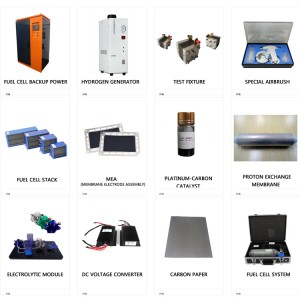Fuel cell is a kind of energy conversion device, which can convert the electrochemical energy of fuel into electrical energy. It is called fuel cell because it is an electrochemical power generation device together with the battery. A fuel cell that uses hydrogen as fuel is a hydrogen fuel cell. Hydrogen fuel cell can be understood as the reaction of water electrolysis into hydrogen and oxygen. The reaction process of hydrogen fuel cell is clean and efficient. Hydrogen fuel cell is not limited by the 42% thermal efficiency of Carnot cycle used in traditional automobile engine, and the efficiency can reach more than 60%.
Unlike rockets, hydrogen fuel cells generate kinetic energy through the violent reaction of hydrogen and oxygen combustion, and release the Gibbs free energy in hydrogen through catalytic devices. Gibbs free energy is an electrochemical energy involving entropy and other theories. The working principle of hydrogen fuel cell is that hydrogen is decomposed into hydrogen ions (i.e. protons) and electrons through the catalyst (Platinum) in the positive electrode of the cell. Hydrogen ions pass through the proton exchange membrane to the negative electrode and oxygen react to become water and heat, and the corresponding electrons flow from the positive electrode to the negative electrode through the external circuit to generate electric energy.
In the fuel cell stack, the reaction of hydrogen and oxygen is carried out, and there is charge transfer in the process, resulting in current. At the same time, hydrogen reacts with oxygen to produce water.
As a chemical reaction pool, the key technology core of fuel cell stack is “proton exchange membrane”. The two sides of the film are close to the catalyst layer to decompose the hydrogen into charged ions. Because the hydrogen molecule is small, the hydrogen carrying electrons can drift to the opposite through the tiny holes of the film. However, in the process of the hydrogen carrying electrons passing through the holes of the film, the electrons are stripped from the molecules, leaving only the positively charged hydrogen protons to reach the other end through the film.
Hydrogen protons are attracted to the electrode on the other side of the film and combine with oxygen molecules. The electrode plates on both sides of the film split hydrogen into positive hydrogen ions and electrons, and split oxygen into oxygen atoms to capture electrons and turn them into oxygen ions (negative electricity). Electrons form a current between the electrode plates, and two hydrogen ions and one oxygen ion combine to form water, which becomes the only “waste” in the reaction process. In essence, the whole operation process is the power generation process. With the progress of oxidation reaction, electrons are continuously transferred to form the current required to drive the car.
Post time: Feb-12-2022



